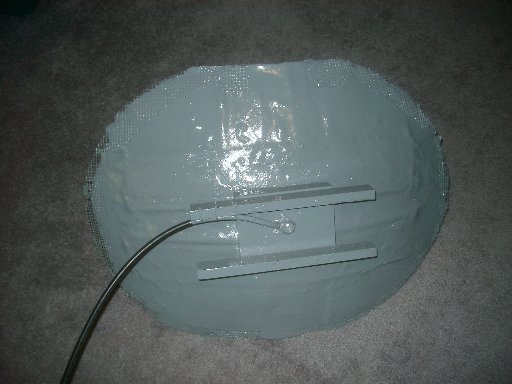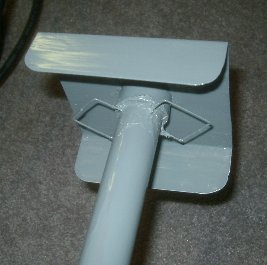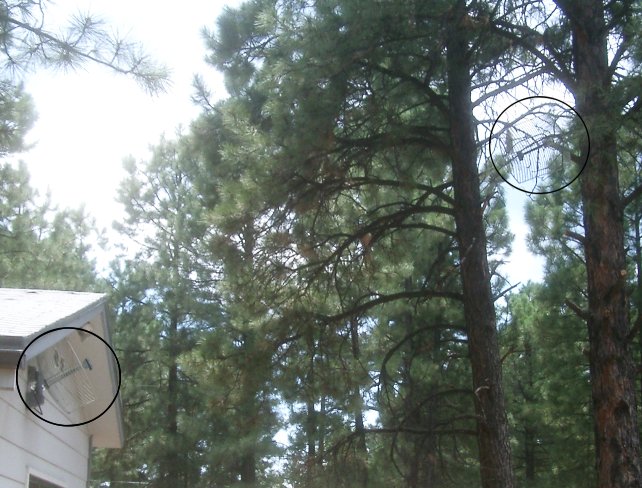
If you have a line of sight between 2 points, separated by some kilometers, you can set up a fast 802.11g network connection between them for as little as a few hundred dollars. The most expensive parts are a pair of access points (preferably 2 that can be put into a bridging mode, such as D-Link's DWL-2100AP model) or computers with wireless network cards having connectors for external antennas, and the external antennas themselves. Be sure to connect them with decent microwave cable (LMR-400 is a good choice) and adequate lightning protection (see below).
In addition to their low cost, a major advantage of using off-the-shelf 802.11g equipment is that the low transmitting power makes it very difficult to put yourself in violation of the provisions in Part 15 of FCC regulations (but read it carefully and do the calculations yourself, just to be certain -- the key is Section 15.247, especially paragraphs (b)(3)(i,iii) which make generous allowances for fixed point-to-point systems).
Line of sight is essential. But even with one or two branches in the way, speeds faster than a T1 connection (1.54 Mbps) can be easily achieved. The main problem with foliage is its water content. Water very efficiently absorbs and/or scatters microwave radiation. Dead and dry branches interfere much, much less than live ones (except when it rains or snows). Ideally, the entire first Fresnel zone ought to be clear between the 2 antennas, but there is room for some slop. A lot of handy perl scripts and other info for designing microwave paths can be found at QSL.net's web site.
| 2.4 GHz antennae are becoming increasingly easy to purchase, but they can be hand-made, or made from a scavenged parts, too. Here is the back of a homemade parabolic antenna, constructed of wire mesh covered with fiberglass and resin, protected from solar UV with a few coats of outdoor enamel. The wooden cradle rig enables mounting to a tree with webbing straps (wouldn't want to harm the tree or anything). |

|

| The antenna feed is a bi-quad dipole with a sheet-metal reflector plate, supported by a pvc tube (easy to make out of scrap material). Various ideas for simple microwave feeds can be found here. End-to-end gain for this antenna at 2.4 GHz is about 20 dB. A lot of very useful information about microwave antennas is available in Paul Wade's on-line book. |
For reasonable network security, don't rely on the WEP or WPA encryption built into off-the-shelf 802.11 equipment. It can't hurt to turn it on, but it probably wouldn't slow a determined script kiddie down for long. A pair of low-end linux boxes make great endpoint gateways, running a VPN (such as Openswan) over the microwave link between them. A firewall (such as netfilter/iptables) should be used on each end to reject all packets not required for establishing and operating the VPN.
|
An installation 50' up a ponderosa pine gives a decent line of sight to another antenna on a hill a few kilometers away. A telescopic view from the other antenna is below, with this antenna appearing as a tiny gray dot (marked by thin black lines). Sure enough, there's a line of sight between them.
|

|
It's essential to protect the transmitter and network from lightning, especially if the antenna is mounted up high like this (and even more so if you live in a high lightning risk environment, such as near the crest of a hill in Arizona).

|
Perhaps the best lightning protection comes from having a large air gap between the computer and transmitter in the house and the antenna up in the tree. Two additional parabolic antennae facing each other provide an ideal air gap. This configuration reduced the transmitted throughput by about a factor of three, relative to running LMR-400 straight up the tree, but it's still 2 to 3 times faster than a T1. A heavy copper ground strap runs the length of the pine tree and branches out underground from the base of the tree to discourage arcing between the tree and the house. |